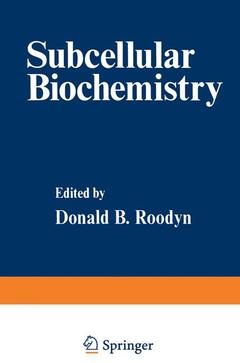The transition from the quarterly Sub-Cellular Biochemistry to the annual SUBCELLULAR BIOCHEMISTRY is a good opportunity to restate the aims and scope of this publication. They were originally given (in Volume 1 No. 1) as follows: This review and essay journal . . . brings together work on a wide range of topics in sub-cellular biochemistry in the hope of stimulating progress towards an integrated view of the cell. It deals with the biochemistry and general biology of nuclei, mitochondria, lysosomes, peroxisomes, chloroplasts, cell membranes, ribosomes, cell sap, flagellae and other specialized cell components. In addition to articles dealing with conventional biochemical studies on sub-cellular struc tures, the journal publishes articles on the genetics, evolution and biogenesis of cell organelles, bioenergetics, membrane behaviour and the interaction between cell structures, particularly between nucleus and cytoplasm. The first four volumes (in the quarterly format) fulfilled many, but not all, of these stated aims, and it is hoped that further articles in the new annual series will soon fill any deficiencies in the range of topics covered. Over the years we have intentionally not interpreted the title of the publication in a too literal sense. Although we have included specific articles on individual subcellular fractions (and certainly hope to do so again) the publication is definitely not only concerned with studies on the biochemistry of isolated cell fractions. The primary target is the "integrated view of the cell.




